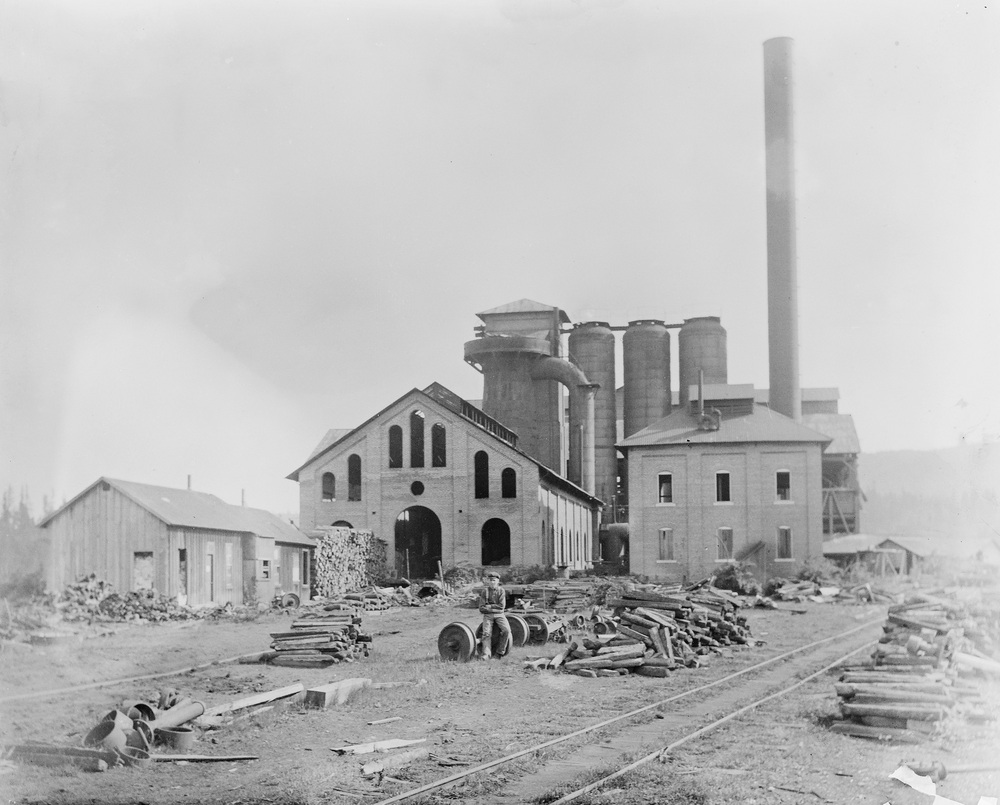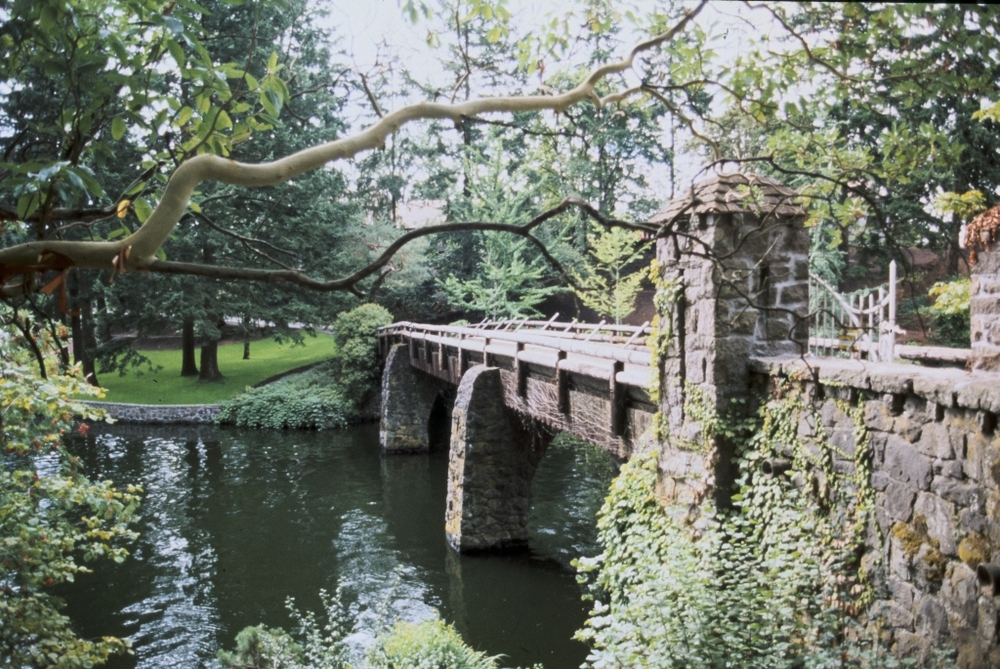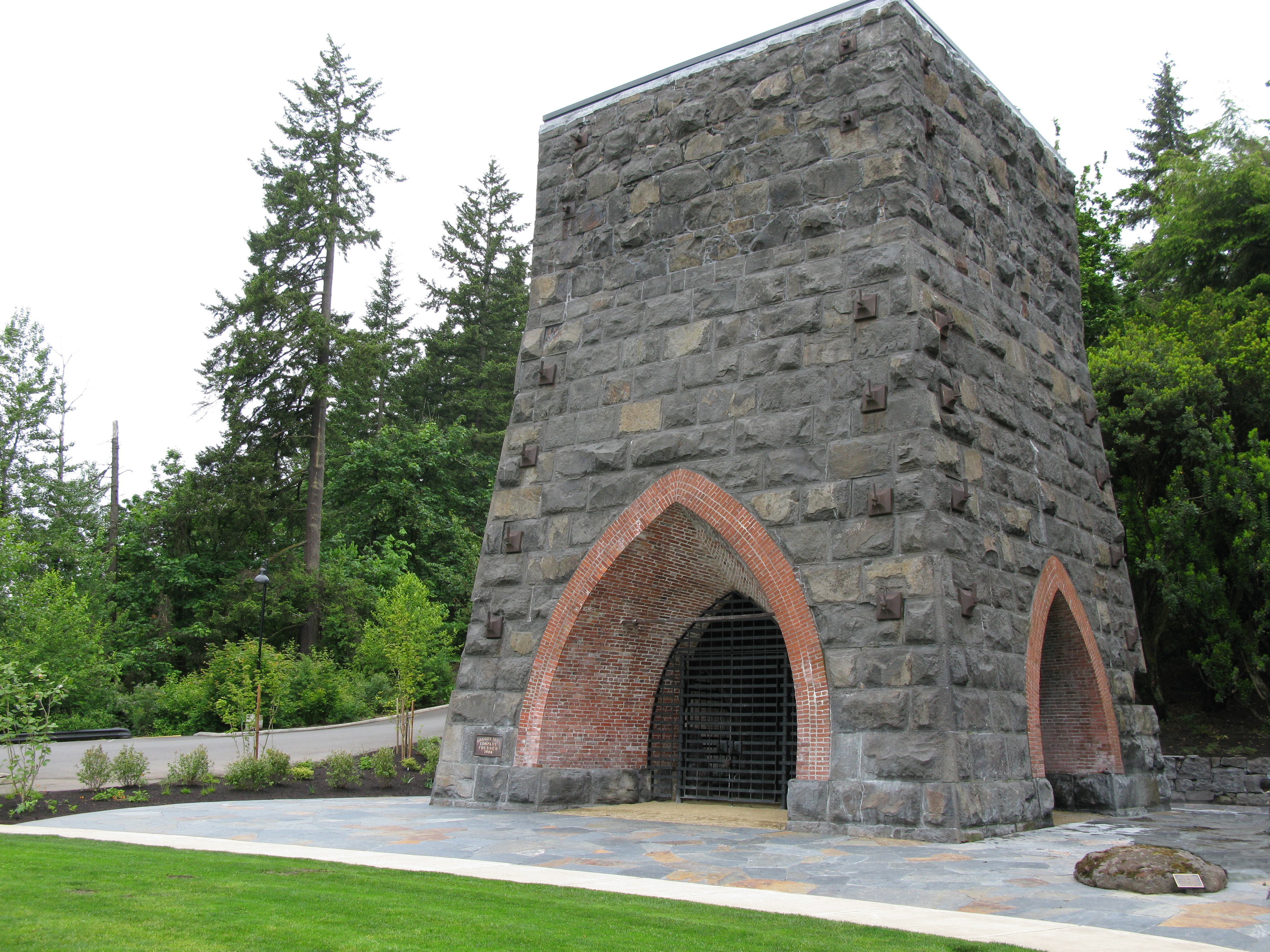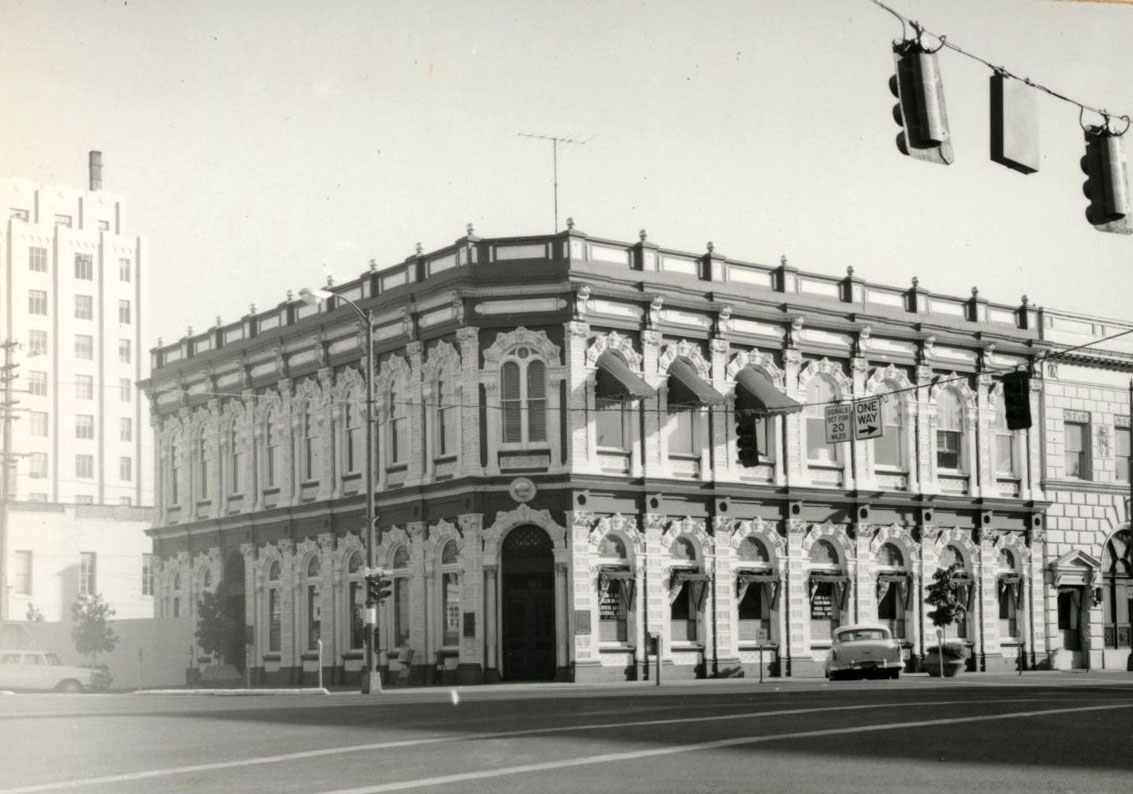The Oregon Iron & Steel Company (OI&S) was incorporated in the town of Oswego, just south of Portland, in 1882. The company was the third and final owner of the mines and blast furnace established by the Oregon Iron Company in 1865. The Oswego Iron Company (1878-1882) was the second owner of the works. OI&S investors were wealthy financiers and industrialists who hoped to establish a “Pittsburgh of the West” on the banks of the Willamette River. The furnace closed in 1894, but its owners later reaped great profits by turning a lake and surrounding land into a valuable recreational spot and expensive real estate.
The iron industry began in the late 1840s with the discovery of ore with a high iron content on the west bank of the Willamette River near Oregon City. In 1862, Aaron Olds established a forge on the Tualatin River, where he smelted a small amount of iron. Four years later, the Oregon Iron Company built the first charcoal iron smelter—the Oswego Iron Furnace—on the Pacific Coast on the edge of Oswego. It appeared to be a perfect site: ore containing approximately 44 to 54 percent iron was available, the Willamette River provided transportation, Sucker Lake provided water power, and a dense forest yielded charcoal to make iron. The Oregon Iron Company produced its first pig iron in 1867.
In 1882, a group of Oregon and California financiers and industrialists—including Henry Villard, Simeon Reed, Darius Mills, and William S. Ladd—purchased the works from the Oswego Iron Company and established the Oregon Iron & Steel Company. By 1888, the company operated a canal, railroad, and mines and owned approximately 23,000 acres of land in Oregon, Washington, and British Columbia.
OI&S built a modern iron works using the latest technology, including a furnace with a fifty-ton capacity, and platted a townsite for workers about a half mile north of the original furnace. As a result, Oswego’s commercial and residential center shifted to the company’s new location. A national economic depression in 1893, however, along with a lack of high-quality ore and expensive operating costs ended Oregon’s “iron dream.”
After 1910, OI&S began developing Sucker Lake and the surrounding land that it owned. Marketing the area to prosperous Portland residents, OI&S owners turned the location that had been an industrial site into a recreational haven. By the 1950s, company owners had turned their property into one of Oregon’s most valuable residential locations, Lake Oswego.
-
![]()
Oregon Iron & Steel Co., c. 1890s..
Lake Oswego Public Libr., Bickner Family Collec., 671b
-
![]()
Oregon Iron & Steel Co. second blast furnace, after 1894.
Lake Oswego Public Libr. Local History Collec., 3523
-
![]()
Oregon Iron & Steel Co. casting operations, about 1890.
Lake Oswego Public Libr. Local History Collec., 756
-
![]()
First furnace of the Oregon Iron Co., about 1880, bought by Oregon Iron & Steel Co. in 1882.
Lake Oswego Public Libr. Local History Collec., 1592
-
![]()
Oregon Iron & Steel Co. casting operations, 1890.
Lake Oswego Public Libr. Local History Collec., 847
Related Entries
-
![Lake Oswego]()
Lake Oswego
Lake Oswego is a suburban city located eight miles southwest of Portlan…
-
![Oswego Iron Furnace]()
Oswego Iron Furnace
The Oswego Iron Furnace, built in 1866 at the confluence of Oswego Cree…
-
![William S. Ladd (1826-1893)]()
William S. Ladd (1826-1893)
At age twenty-seven, William Sargent Ladd was the youngest mayor to eve…
Related Historical Records
Map This on the Oregon History WayFinder
The Oregon History Wayfinder is an interactive map that identifies significant places, people, and events in Oregon history.
Further Reading
Fulton, Ann. Iron, Wood & Water: An Illustrated History of Lake Oswego. Lake Oswego: Historical Publishing Network and the Oswego Heritage Council,2002.
Goodall, Mary. Oregon's Iron Dream: A Story of Old Oswego and the Proposed Iron Empire of the West. Portland: Binfords & Mort, 1958.
Hergert, Herbert L. "Early Iron Industry in Oregon." Reed College Bulletin 26:2 (1948): 15-18.
MacColl, E. Kimbark, with Harry Stein. Merchants, Money, and Power: The Portland Establishment, 1843-1913. Portland: Georgian Press, 1988.
Pumpelly, Raphael. Report on the Mining Industries of the United States. Washington, D.C.: Department of the Interior, 1886.










